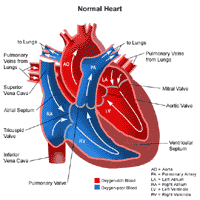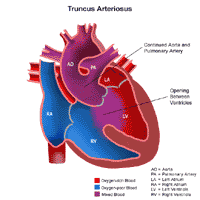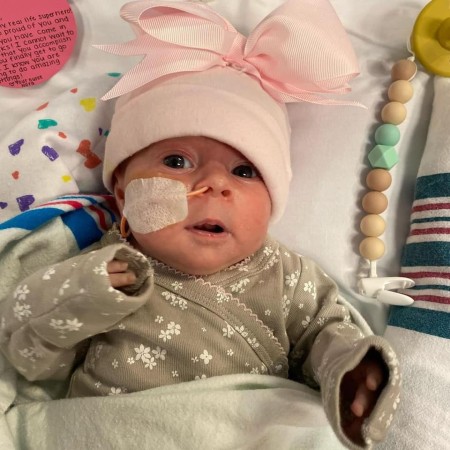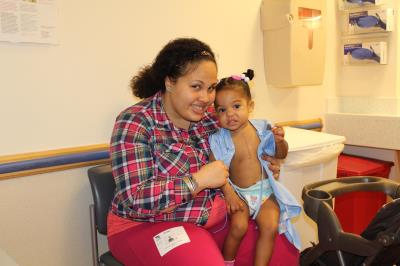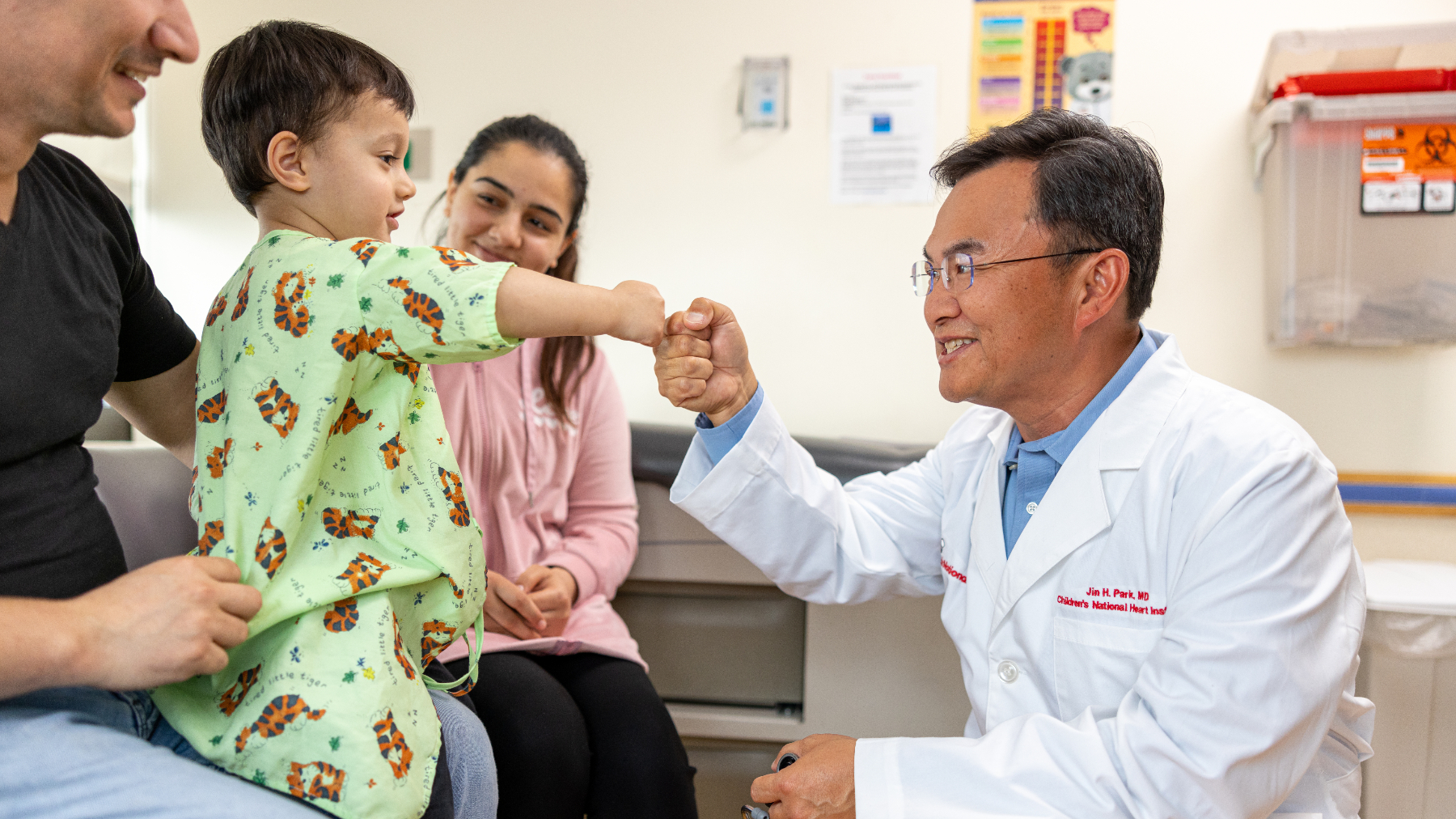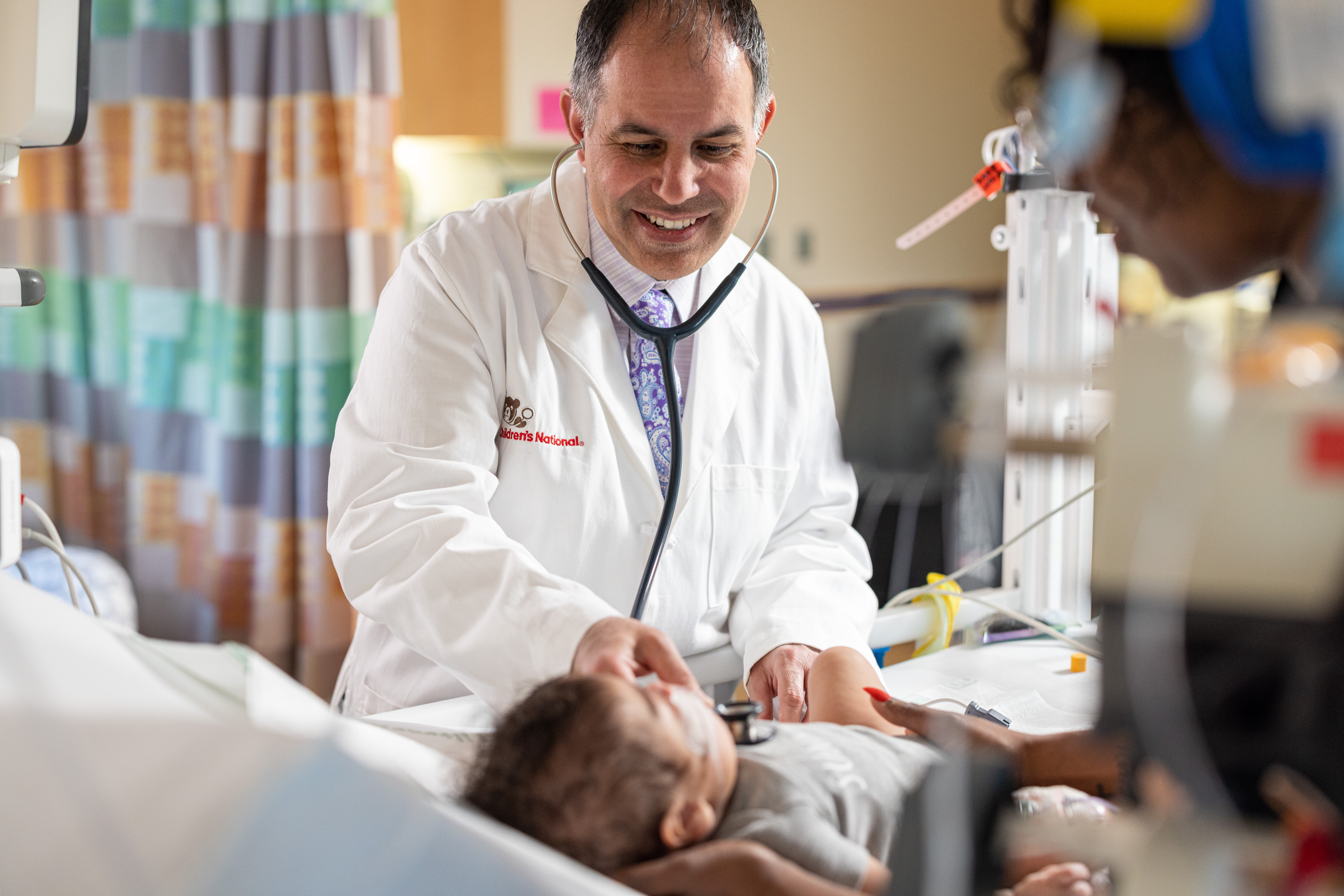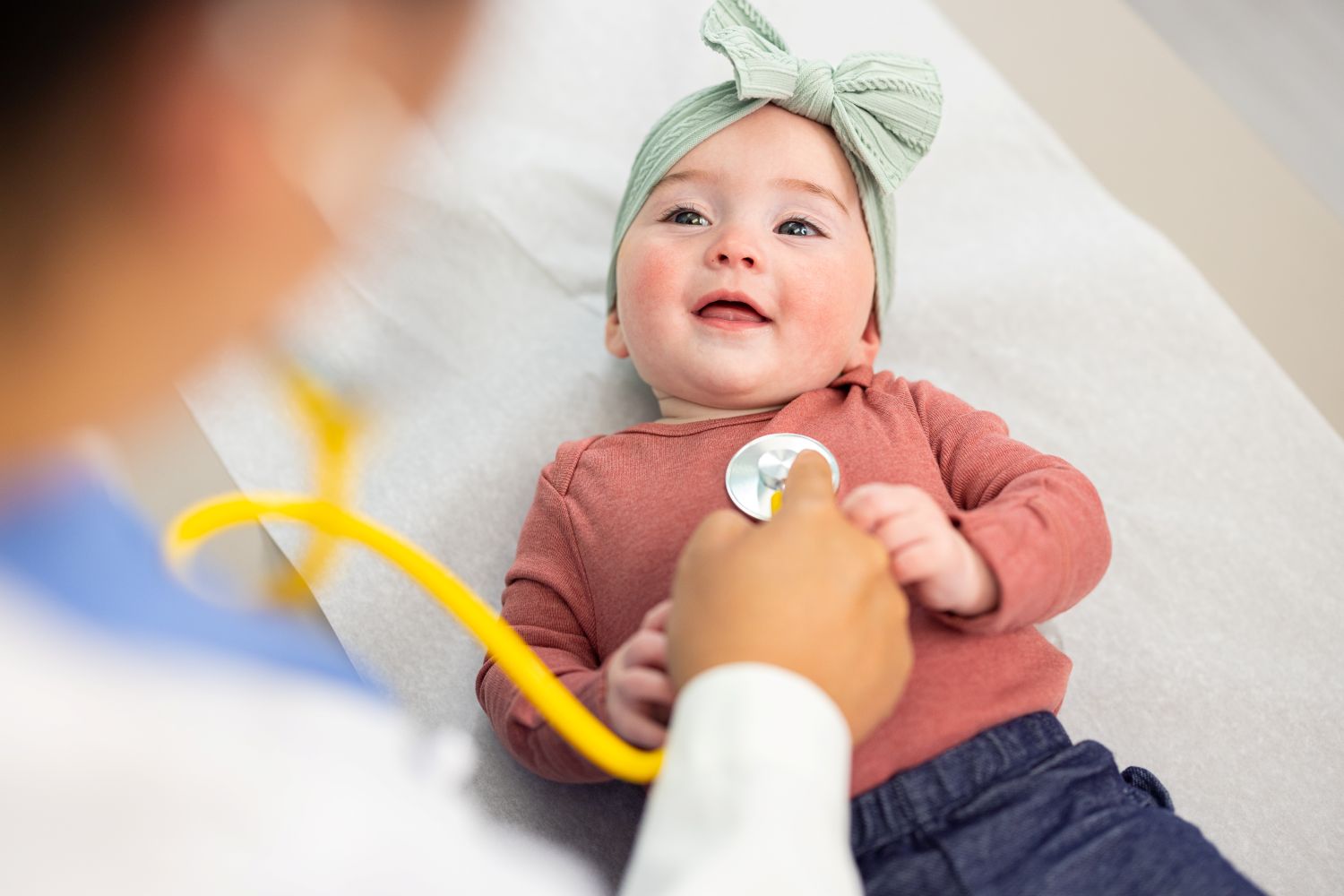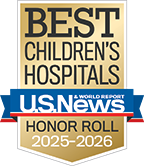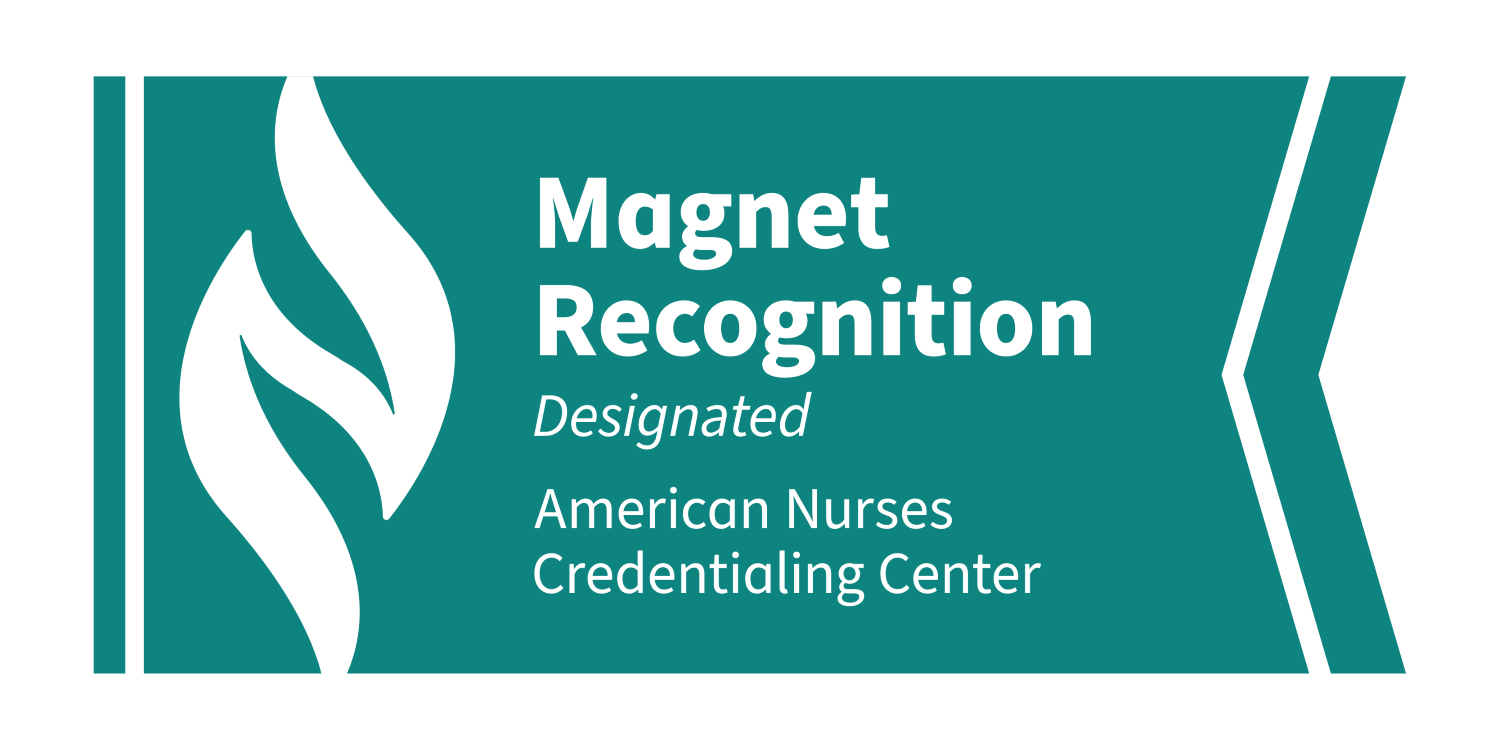Condition
Pediatric Truncus Arteriosus
What You Need to Know
Truncus arteriosus happens when there is an abnormal connection between the aorta and pulmonary artery. It causes oxygen-poor (blue) blood and oxygen-rich blood to mix and to be pumped to the body.
Key Symptoms
The most common symptoms of truncus arteriosus are:
- Blue color to skin, lips and nails
- Problems breathing
- Poor feeding or eating
Diagnosis
Truncus arteriosus is typically diagnosed by:
- Fetal ultrasound
- Pulse oximetry
- Chest X-ray
- Electrocardiogram (ECG)
- Echocardiogram (echo)
- Cardiac catheterization
Treatment
Treatment may include:
- Surgery
- Medication
- Noninvasive positive pressure ventilation
Schedule an Appointment
Our pediatric specialists provide personalized care for your child’s physical, mental and emotional health needs. Meet our providers and schedule an appointment today.
Frequently Asked Questions
What is truncus arteriosus in a child?
What causes truncus arteriosus in children?
What are the symptoms of truncus arteriosus in children?
How is truncus arteriosus diagnosed in children?
How is truncus arteriosus treated in children?
What are possible complications of truncus arteriosus in children?
How can I help my child live with truncus arteriosus?
When should I call my child's healthcare provider?
Meet the Providers Who Treat Truncus Arteriosus
Departments that Treat Truncus Arteriosus
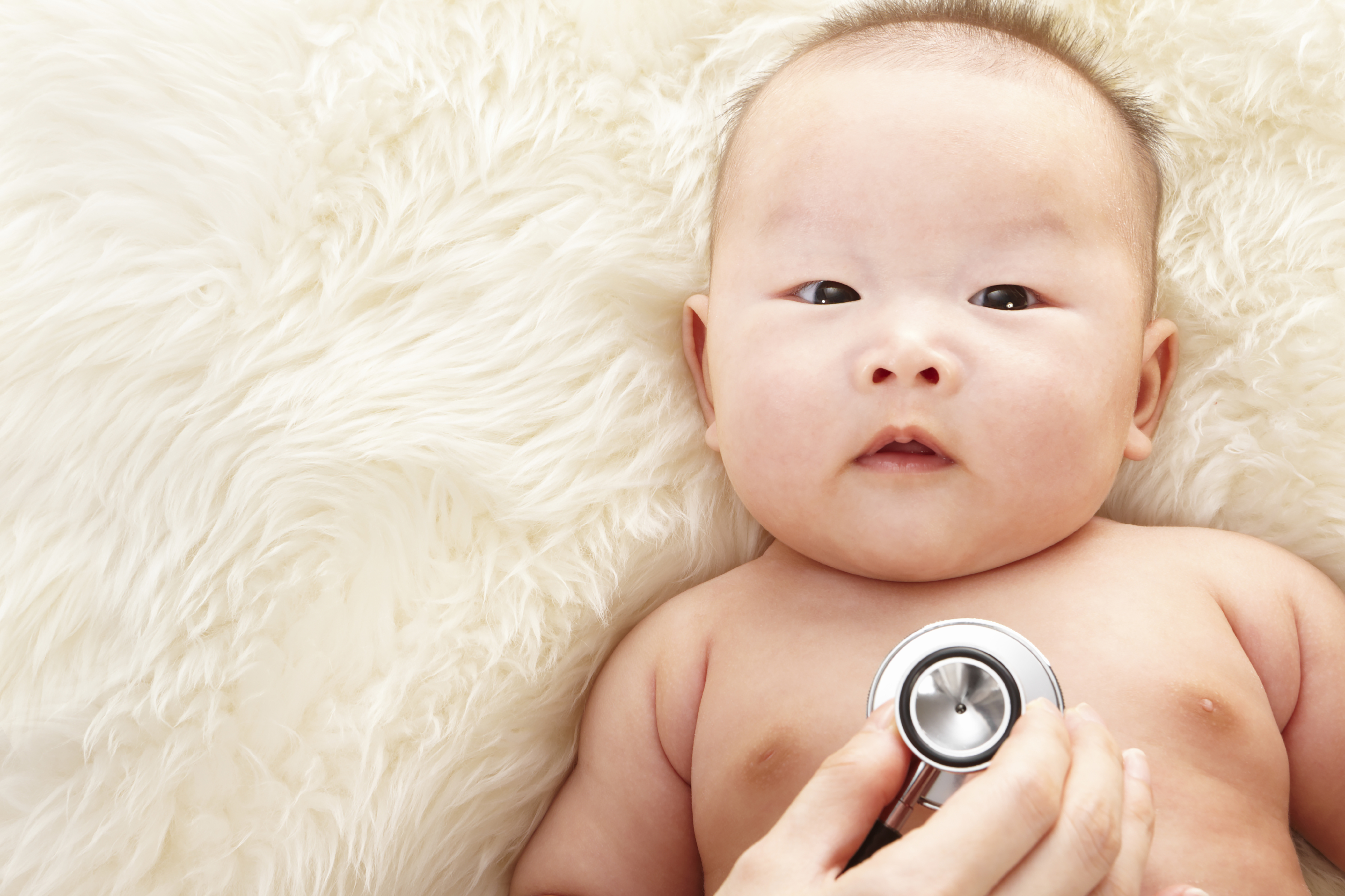
The Zickler Family Prenatal Pediatrics Institute
The Zickler Family Prenatal Pediatrics Institute at Children's National Hospital in Washington, D.C., provides specialized care for babies during pregnancy, delivery and after birth.

Help Kids and Make a Difference
Invest in future cures for some of life's most devastating diseases. Give today to help more children grow up stronger.

